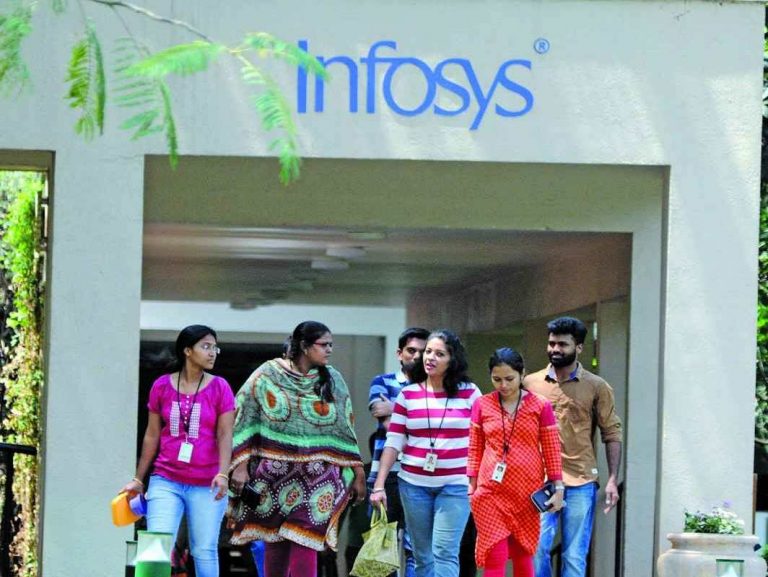
These are critical times for this sector in India and the only way to sail through is to innovate in business models and learn new skills such as artificial intelligence and cloud computing
~By Imran Qureshi in Bengaluru
The IT industry in India is again facing challenging times. Whether it is due to new technologies or US visa policies, there is a churning that is taking place. The focus is clearly to ride the curve of new job-threatening technologies or face the sack.
The insecurity has led to the renewed formation of a forum for IT employees which says that at least 56,000 employees are expected to lose their jobs over the next year. Though industry experts dismiss this insecurity as part of normal attrition and say it is standard practice to get rid of two percent of employees from the bottom of the pyramid every year, the fact remains that annual norms of appraisal have been made tougher. Ashok Soota, executive chairman, Happiest Minds Technologies and a former chairman, Confederation of Indian Industry, said: “In an industry that is still a huge net hirer, employing upwards of a million-and-a-half annually, you are bound to get rid of some people. But there have not been mass layoffs.’’
INSECURE LOT

But there is genuine fear over job losses and it has led to the Forum for Information Technology Employees trying to get itself registered formally. It will be the first independent association of its kind in the country and is a bid to organise the estimated 2.8 million employees in India’s IT sector. The insecurity runs high and the forum claims that at least 56,000 employees of top software companies such as Infosys, Wipro and Cognizant are expected to lose their jobs over the next year. J Jayaprakash, a member of the forum, said: “Since we ourselves are IT employees who have started this, people trust us to take up their issues.”
The reality is that automation is slowly taking over this industry and, as Soota says, will replace a “large number of low-value jobs by higher-value but smaller number of jobs”.
This will also decrease the number of jobs in this sector. The nature of engagement in this sector will undergo a transition, which many in the industry see as yet another phase that could help it grow further.
Fundamentally, the older form of doing business is changing. No more are clients coming up with large projects that last for a minimum of a couple of years. These have been reduced from 18-24 months to just three months now. “New businesses are very project-oriented. It is platform-based and you need people to get it up and running. This requires fewer people and work is shorter in duration and cyclical,’’ said an HR manager on condition of anonymity.
SENIOR POSITIONS
Unlike previous years, what has added to the hue and cry this year is the purging of people in senior positions such as vice-presidents or senior V-Ps. Mohandas Pai, former CFO and HR head of Infosys, calls it a “clutter concentrated at a certain level’’. His counterparts, however, call it “people stuck with legacy technology, little learnability and less adaptability’’. In short, it means that these managers don’t bring value to the work that the team is doing.
”Indian companies may even go to universities in the US to hire local talent, groom them and put them on the job. We will also get to know what skill sets the local people have.”
– A former HR director of an IT firm
A business head of a major company said: “There are a dime-a-dozen managers in this industry and they are not needed. Technology has also moved to a point where the industry can afford not to have them. The result is pink slips. The industry needs to have every resource that is billable. This is the reason for the purge in the middle.’’
But surely these people can be re-skilled? An HR consultant who previously worked for an IT company said: “It is not easy. It depends entirely on the mindset of the individual and the technology background. Today, the customer is no longer saying I want this to be done like earlier. He simply asks what can you do to improve things?”
In the old days, said Soota, it was easier for people who couldn’t get re-skilled to move on because industry was growing at a phenomenal pace. Today, it simply cannot afford it. But it is not a bad thing as such people have another chance to become entrepreneurs. “After all, every other industry has an IT arm. The demand for IT skills will remain high because there is a huge amount of requirement everywhere,’’ he said.
NEW CHALLENGES
The change is happening at a phenomenal pace. A business head of an IT company said: “When the internet came, you could not find Java-trained individuals. Now, we are talking about data science and machine learning which makes artificial intelligence adaptable. These are the newer challenges. In fact, today, architects are still in demand, hands-on programmers are still in demand….”
“Automation will replace a large number of low-value jobs by higher-value but smaller number of jobs.”
—Ashok Soota, executive chairman, Happiest Minds Technologies
This is an industry that is quick to adapt and has done so every time it has faced a crisis. Whether it is the Y2K one, the Lehman Brothers crash or the US slowdown, the Indian IT industry simply went on an overdrive and re-skilled and adapted to meet the demands of the market and grow. It is the same approach it is adapting this time too, despite the new curbs on H1B visas proposed by the US government.

In fact, even before Donald Trump came to occupy the White House, former president Barack Obama’s rhetoric had forced the Indian IT industry to reduce its share of H1B visas in fiscal 2016. According to a report by National Foundation for American Policy, a US-based non-profit think-tank, seven top Indian IT companies saw a drop of 37 percent in H1B visas in 2016 as compared to 2015. These included TCS, Wipro and Infosys. It said, the 9,356 new H1B petitions for the top seven Indian-based companies approved in fiscal 2016 represent only 0.006 percent of the US labour force. So, it is hardly surprising that companies have reduced the number of applications for the coveted visas this year.
Not just that, the sector is changing its business model of onsite deployment. From the days when almost 50 percent of a company’s work was outside India, it has been reduced to 30 percent. This means that the number of Indians who used to be sent abroad by IT companies will come down and could be reduced to as little as 10 percent.
Kris Laxmikanth, CEO, Headhunters, said that with the new norms, Indian companies will be hiring Americans locally. One former HR director said: “Indian companies may even go to universities there to hire local talent, groom them and put them on the job. We will also know what skill sets the local people have.” Soota added that by sending higher skilled people abroad, Indian companies will evolve and move up the value chain.
Some insiders were surprised at the proposal of Infosys’ founder, NR Narayan Murthy that top managements of IT companies take a cut in salary so that the younger lot does not lose jobs. “It is a cut-and-dried world today. If you are paid handsomely, professionals perform. Otherwise, they find better jobs and go away,” said an HR consultant.
The only way then to survive this dog-eat-dog world is to move towards new opportunity areas like machine learning, artificial intelligence, IoT (Internet of Things) and robotic process automation. Doing a niche job is the security one needs.

